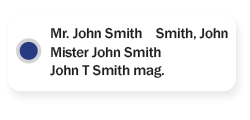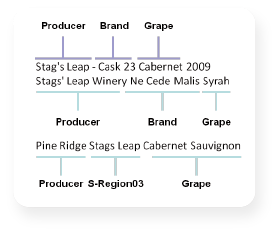Tagging Data and Standardisation
Transforming Complexity into Clarity: Unleash the Power of Data
Streamline Your Data with Precision: Introducing Cutting-Edge Data Tagging and Standardisation Analytics Services
Tagging data and standardisation refer to two crucial processes that help ensure data is organised, structured, and labelled correctly for effective analysis. While the volume of data collected has reached astronomical proportions, the fact that most data are collected in a system that is largely modular and distributed creates a “Tower of Babel” of different databases, thereby potentially limiting synergetic knowledge production.
Data standardisation is key to facilitating and improving the use of data.
Country Data
Inconsistencies in country names can hinder comprehensive analyses and accurate conclusions when drawing conclusions from the data.
The inconsistency arises due to several factors, including variations in country names, alternate spellings, abbreviations, or changes in geopolitical boundaries over time. Such discrepancies can lead to duplicate entries, ambiguous aggregations, and erroneous geographical classifications.




Names
Data inconsistency with names can pose significant challenges in various fields, such as customer databases, healthcare records, or financial systems.
The inconsistency can arise due to different data entry practices, varying naming conventions, and cultural differences. Additionally, misspellings or typographical errors further contribute to the problem.






Inventory
Data inconsistency with inventory can be a critical hindrance to deriving accurate and actionable insights.
Inventory data may originate from various sources like point-of-sale systems, supplier records, and manual stock counts, leading to discrepancies due to different formats, update frequencies, or even data quality issues. These inconsistencies can result in erroneous inventory levels, misleading trends, and incorrect demand forecasts. Consequently, the reliability of analytics-driven decision-making is compromised.




Web Banner Advertising and Keyword Searches
Data inconsistencies can hinder the accurate measurement of campaign performance and impact decision-making processes.
When analysing digital advertising campaigns or search engine marketing efforts, data discrepancies can arise due to various factors. These may include different tracking mechanisms employed by advertising platforms, variations in ad impressions reporting, and discrepancies in click-through rates. Additionally, keyword searches may differ in phrasing or context, leading to inconsistent data representation.



CPRA Data Tagger:
Automated, On-Premise or on the CPRA cloud
The engine identifies and extracts attributes that can be used to uniquely define each data row.
Attributes are moved into the appropriate fields of the structured data model.
Cleaning of data for case, accents, punctuation is done as a matter of course.
A key feature of the data tagger is its flexibility: it is driven by business user accessible parameters so that as new data comes in the tagger stays relevant without having to access the engine.
Data Tagging & Standardisation Delivered
Creating a structured, consistent data set then unlocks the data.
Attributes can we used to perform a structured matching process to identify any duplicates.
Hierarchies can now be imposed and the removal of duplicates allows accurate data consolidation and reconciliation to finally occur.





























